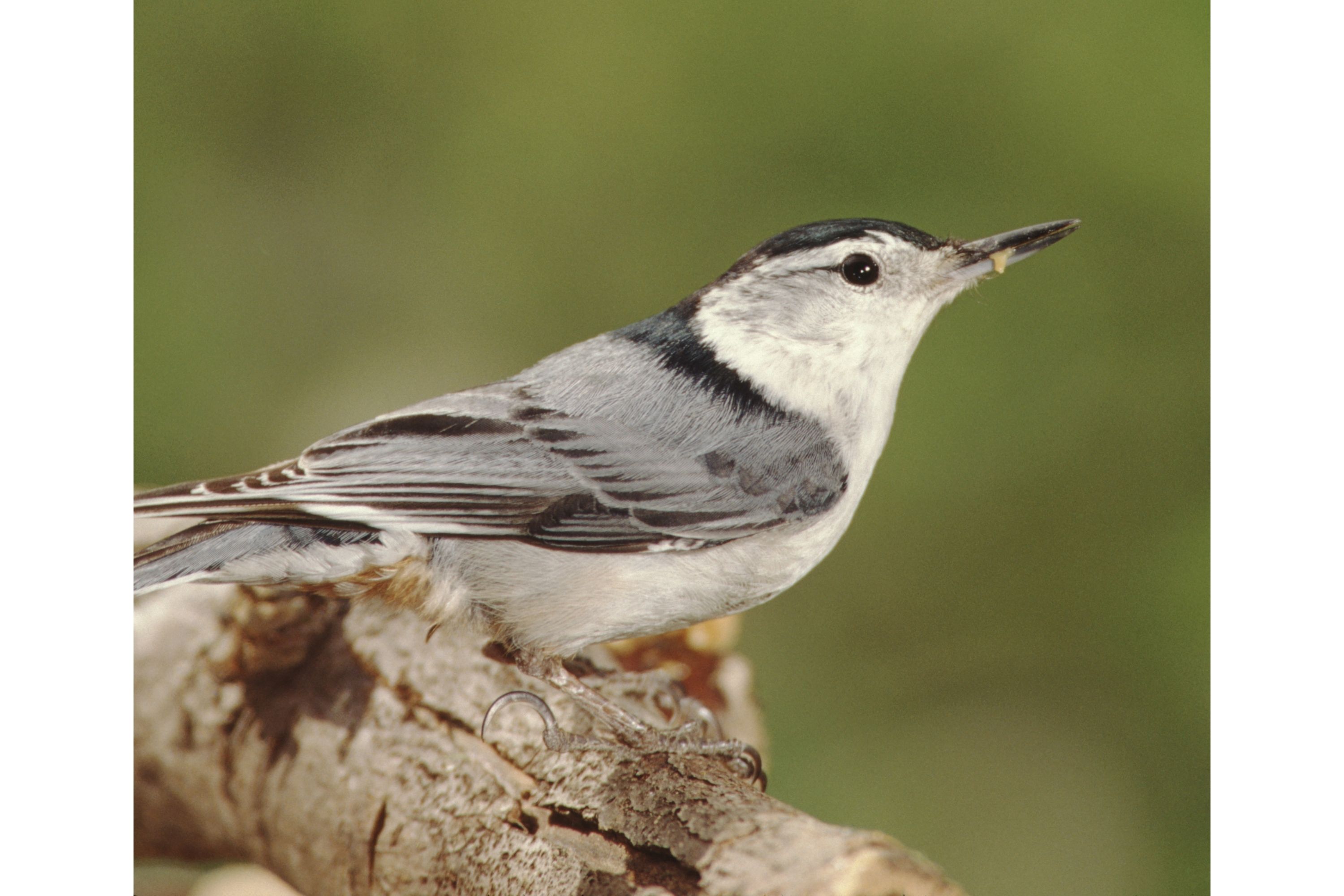White-breasted nuthatch
(Sitta carolinensis)

Description
Sitta carolinensis, commonly known as the White-breasted Nuthatch, is a small passerine bird that is native to North America. It is a highly recognizable bird due to its distinct appearance and unique behavior. In this article, we will discuss the physical characteristics, habitat, diet, behavior, and conservation status of Sitta carolinensis in detail. Physical Characteristics: The White-breasted Nuthatch is a small bird, measuring about 5.5 to 6 inches (14 to 15 cm) in length, with a wingspan of 8.7 to 10.2 inches (22 to 26 cm). It weighs around 0.6 to 1 ounce (18 to 28 g) and has a short, stubby tail. The male and female of this species look alike, with a blue-gray back and wings, white underparts, and a black cap on the head. The most distinctive feature of the White-breasted Nuthatch is its long, straight, pointed bill, which it uses to pry insects from the bark of trees. Habitat: The White-breasted Nuthatch is found throughout North America, from southern Canada to Mexico. It is a year-round resident in most of its range, although it may move south in winter to escape harsh weather conditions. This bird is typically found in deciduous and mixed forests, preferring areas with mature trees and plenty of dead wood. It also occurs in suburban and urban areas, where it can be attracted to bird feeders. Diet: The White-breasted Nuthatch is primarily an insectivore, feeding on a variety of insects and spiders found on tree bark. It uses its long bill to pry off bark, exposing the insects underneath. It also eats nuts and seeds, which it caches in crevices and under bark for later use. This bird is known for its habit of wedging seeds into bark and hammering them with its bill to open them. Behavior: The White-breasted Nuthatch is an acrobatic bird, often seen running headfirst down tree trunks and branches. It has strong feet and claws that enable it to cling to bark and hang upside down. This bird is also known for its distinctive call, which is a nasal "yank-yank" sound. It communicates with other members of its species using a range of calls and songs. Breeding: The breeding season for the White-breasted Nuthatch occurs in early spring. The male establishes a territory by singing and defending it from other males. Once he has attracted a mate, the pair builds a nest in a natural cavity, such as a hole in a tree or a crevice in a building. The female lays 5 to 8 eggs, which are incubated by both parents for about 12 days. The chicks fledge after about 18 to 26 days and are fed by the parents for several more weeks before becoming independent. Conservation Status: The White-breasted Nuthatch is considered a species of least concern by the International Union for Conservation of Nature (IUCN). It has a large range and a stable population, estimated to be around 8.8 million individuals. However, like many bird species, the White-breasted Nuthatch is threatened by habitat loss due to deforestation and urbanization. It is also vulnerable to climate change, which can alter the timing of seasonal events, such as migration and breeding. Conclusion: Sitta carolinensis, the White-breasted Nuthatch, is a distinctive and fascinating bird that is found throughout North America. Its acrobatic behavior, unique call, and distinctive appearance make it a popular subject for birdwatchers and nature lovers.
Taxonomic tree:







